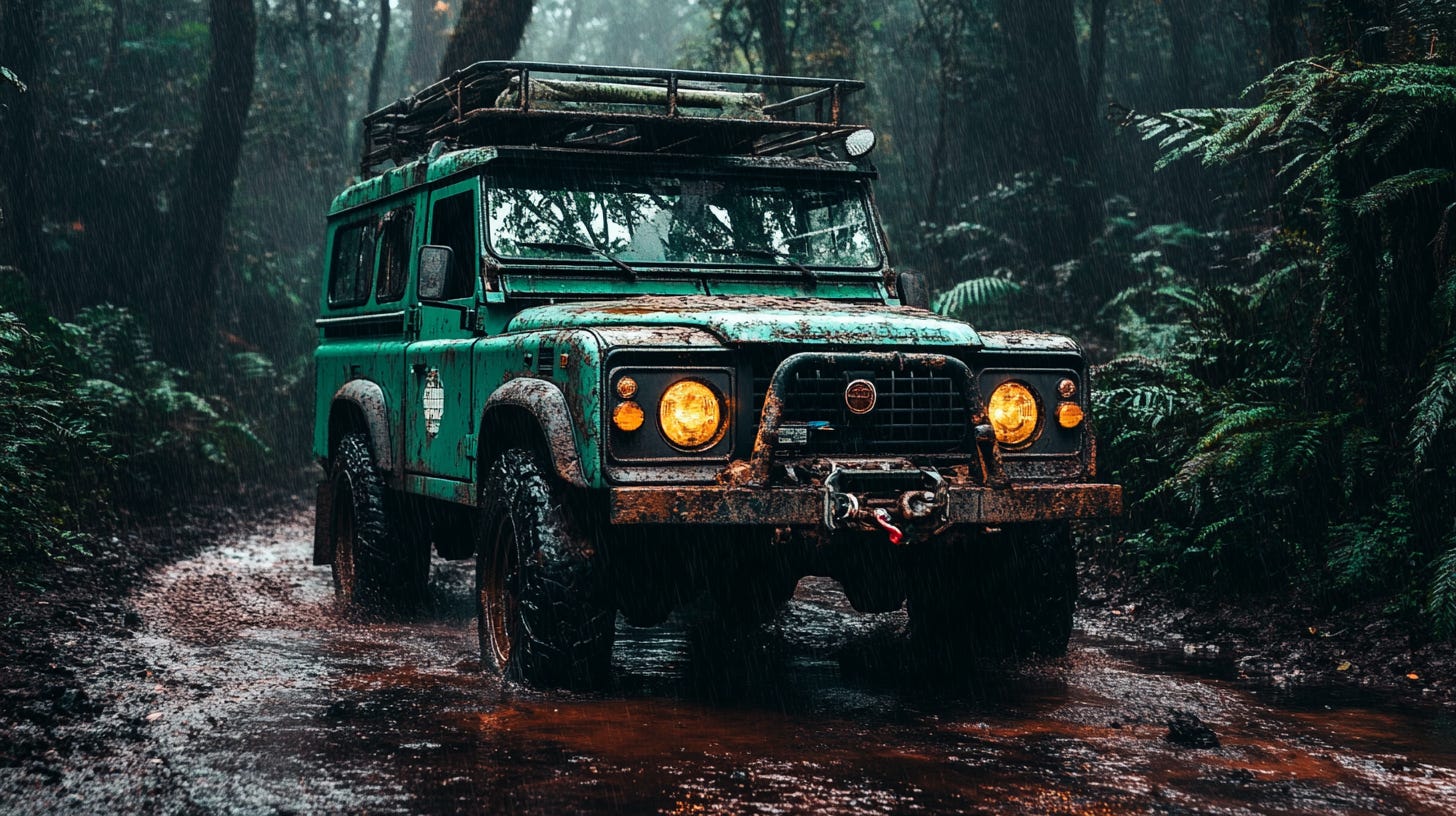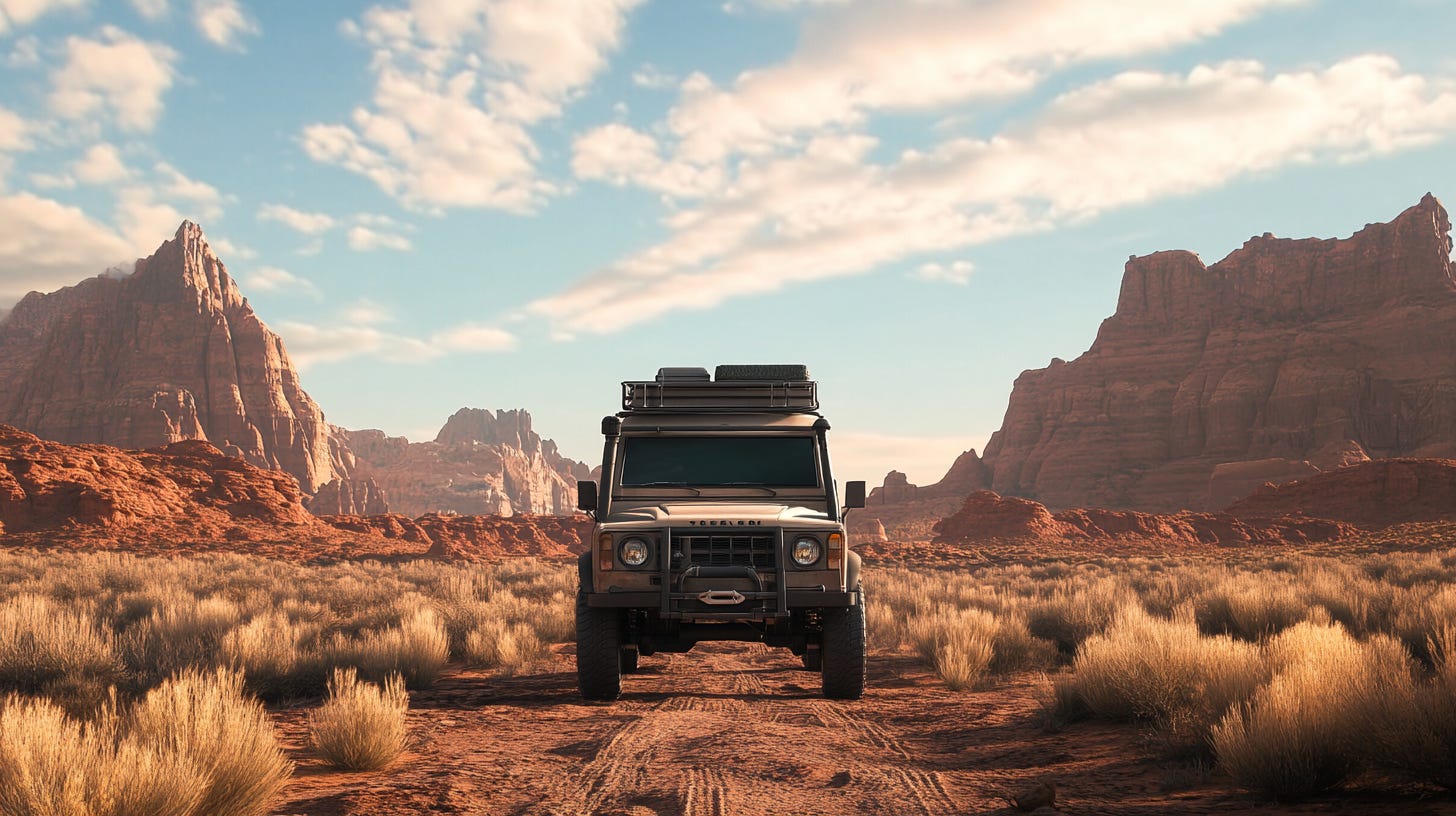10 Overlanding Mistakes I Made So You Don’t Have To

Overlanding is an incredible adventure that combines the thrill of off-road travel with the beauty of exploring remote places. But with adventure comes challenges, and even the most experienced overlanders make mistakes along the way. The good news is, you can learn from my experience to make your own journey smoother and safer. Here are 10 overlanding mistakes I made, so you don’t have to.

1. Not Researching the Route Enough 🗺️
One of the biggest mistakes I made was failing to thoroughly research my route before setting out. I trusted my GPS and ended up on trails that were way beyond my skill level and vehicle’s capabilities.
Lesson Learned: Always research your route ahead of time. Look for recent trail reports, identify challenging sections, and download offline maps. Apps like Gaia GPS and OnX Offroad are invaluable for route planning and offline navigation.
2. Overpacking and Underpacking 🎒
It’s easy to either overpack or underpack when preparing for an overlanding adventure. I’ve been guilty of both—bringing way too much gear that weighed down my rig and also forgetting essential items like extra fuel or tools.
Lesson Learned: Create a detailed packing list that includes all essentials but leaves out unnecessary extras. Remember, weight affects fuel efficiency and handling, so pack only what you need to keep your setup light and functional.
3. Forgetting to Air Down Tires 🛞
Driving on loose terrain like sand or gravel without adjusting my tire pressure was a big mistake. I ended up getting stuck more than once because I didn’t air down my tires.
Lesson Learned: Always air down your tires when driving on sand, gravel, or rocky terrain. This increases the surface area of the tire, providing better traction and reducing the risk of getting stuck. Just make sure you have an air compressor to reinflate your tires once you’re back on pavement.

4. Ignoring Vehicle Maintenance 🛠️
I underestimated the importance of regular vehicle maintenance before and during my trip. On one journey, a worn-out belt snapped, leaving me stranded in a remote area.
Lesson Learned: Pre-trip maintenance is crucial. Inspect your belts, hoses, fluids, and tires before every trip. Carry essential spare parts and tools to handle minor repairs on the go, and always be proactive in checking your vehicle during the journey.
5. Underestimating Fuel Requirements ⛽
I once ran out of fuel because I assumed there would be a gas station nearby. Unfortunately, in remote areas, fuel stations can be few and far between.
Lesson Learned: Always overestimate your fuel requirements, and carry extra fuel in jerry cans. Research your route and identify fuel stops along the way to ensure you never run out in the middle of nowhere.
6. Not Checking Weather Conditions 🌦️
I learned the hard way how quickly weather can change, especially in mountainous areas. On one trip, I ended up on a muddy trail during heavy rainfall, which made progress nearly impossible.
Lesson Learned: Check the weather forecast before and during your journey. Unexpected weather can make trails dangerous or impassable, so it’s important to know what to expect and to be ready to change plans if necessary.
7. Not Bringing Enough Water 💧
Dehydration is a real risk when overlanding, especially in hot climates. On one trip, I underestimated my water needs, which left me rationing water for days.
Lesson Learned: Carry at least one gallon of water per person per day, plus extra for cooking, cleaning, and emergencies. Water is your most critical resource when overlanding, so make sure you have more than enough, especially in desert environments.
8. Neglecting Communication Gear 📡
On one remote trip, I realized that I had no cell signal and no other way to contact anyone. It was a wake-up call to the importance of having reliable communication gear.
Lesson Learned: Don’t rely on cell service in remote areas. Carry a satellite communicator like the Garmin inReach or a CB radio to ensure you can call for help if needed. Having a reliable means of communication is a safety essential.
9. Setting Up Camp Too Late 🌙
I’ve made the mistake of arriving at my campsite well after dark, which made it challenging to set up my tent, cook, and get settled comfortably.
Lesson Learned: Always aim to set up camp well before dark. This gives you enough time to find a good location, set up properly, and enjoy the evening without the stress of fumbling in the dark. Plus, it’s safer to scout out your surroundings in daylight.
10. Not Following Leave No Trace Principles 🌿
Early in my overlanding experience, I didn’t fully understand the importance of Leave No Trace principles. I left behind some trash, thinking it wasn’t a big deal—but it is.
Lesson Learned: Leave No Trace is critical for preserving the beautiful places we explore. Always pack out all of your trash, avoid disturbing wildlife, and stick to established trails and campsites. Overlanding is about respecting nature, and every action counts toward preserving the environment for future adventurers.

Final Thoughts
Overlanding is a rewarding adventure, but it’s also one that requires planning, preparation, and flexibility. By learning from my mistakes, you can avoid the pitfalls that can turn a great trip into a challenging ordeal. Remember to research your route, pack wisely, maintain your vehicle, and always be prepared for the unexpected.
The open road is full of possibilities—embrace the adventure, learn as you go, and enjoy every moment of the journey. Happy overlanding! 🚙✨🌍
Member discussion